SCDS385B January 2018 – July 2018 TS5MP645
PRODUCTION DATA.
- 1 Features
- 2 Applications
- 3 Description
- 4 Revision History
- 5 Pin Configuration and Functions
- 6 Specifications
- 7 Parameter Measurement Information
- 8 Detailed Description
- 9 Application and Implementation
- 10Power Supply Recommendations
- 11Layout
- 12Device and Documentation Support
- 13Mechanical, Packaging, and Orderable Information
Package Options
Refer to the PDF data sheet for device specific package drawings
Mechanical Data (Package|Pins)
- YFP|36
Thermal pad, mechanical data (Package|Pins)
Orderable Information
7 Parameter Measurement Information
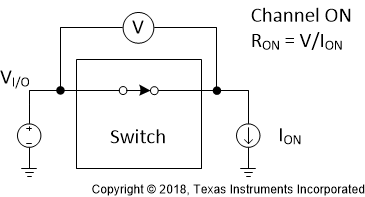 Figure 7. On Resistance
Figure 7. On Resistance  Figure 8. Off Leakage
Figure 8. Off Leakage  Figure 9. On Leakage
Figure 9. On Leakage 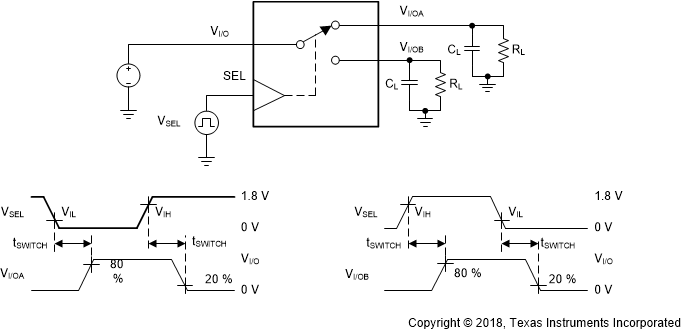
1. All input pulses are supplied by generators having the following characteristics: PRR ≤ 10 MHz, ZO = 50 Ω , tr = 3 ns, tf = 3 ns.
2. CL includes probe and jig capacitance.
Figure 10. tSWITCH timing 
1. All input pulses are supplied by generators having the following characteristics: PRR ≤ 10 MHz, ZO = 50 Ω , tr = 3 ns, tf = 3 ns.
2. CL includes probe and jig capacitance.
Figure 11. tON and tOFF Timing for OE 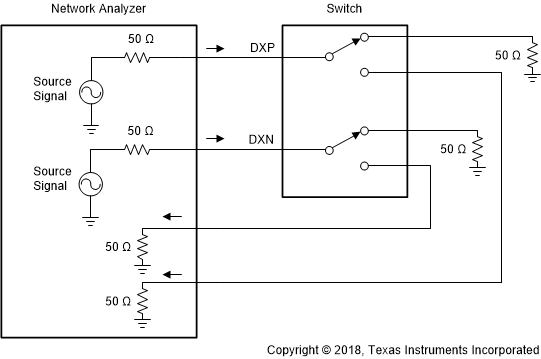 Figure 12. Off Isolation
Figure 12. Off Isolation 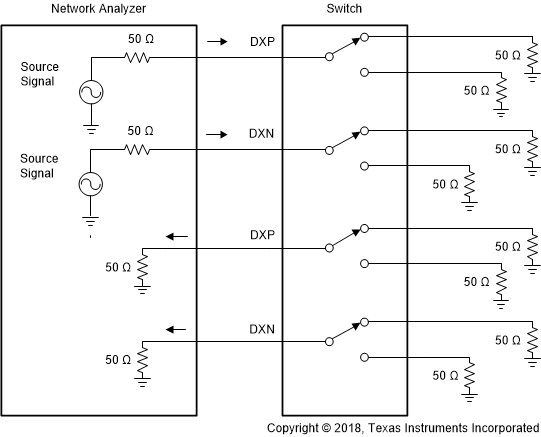 Figure 13. Crosstalk
Figure 13. Crosstalk 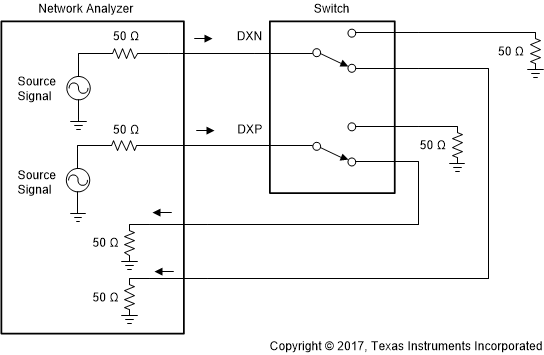 Figure 14. BW and Insertion Loss
Figure 14. BW and Insertion Loss 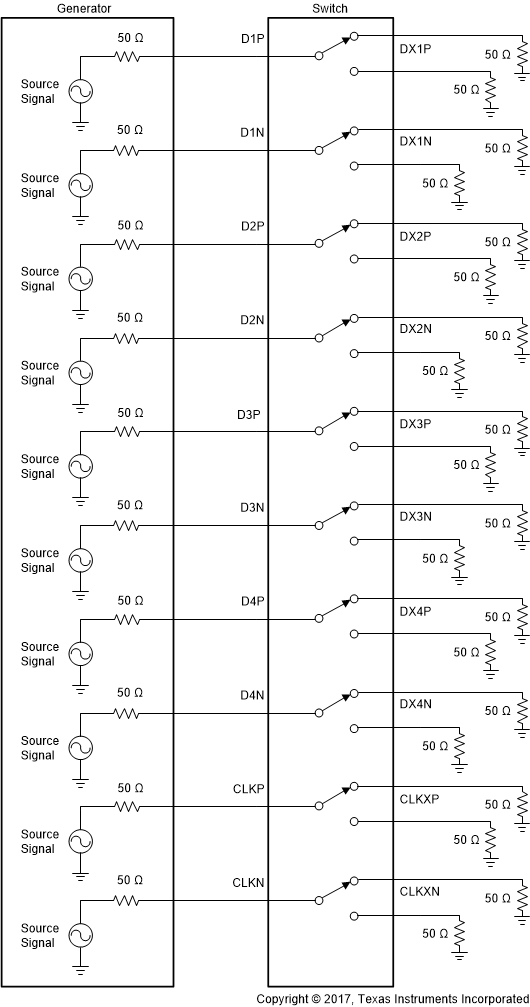 Figure 15. tPD, tSKEW(INTRA) and tSKEW Setup
Figure 15. tPD, tSKEW(INTRA) and tSKEW Setup 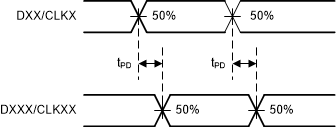
1. All input pulses are supplied by generators having the following characteristics: PRR ≤ 10 MHz, ZO = 50 Ω , tr = 100 ps, tf = 100 ps.
2. CL includes probe and jig capacitance.
Figure 16. tPD 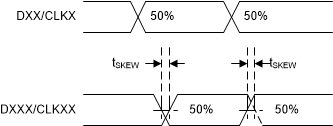
1. All input pulses are supplied by generators having the following characteristics: PRR ≤ 10 MHz, ZO = 50 Ω , tr = 100 ps, tf = 100 ps.
2. CL includes probe and jig capacitance.
Figure 17. tSKEW 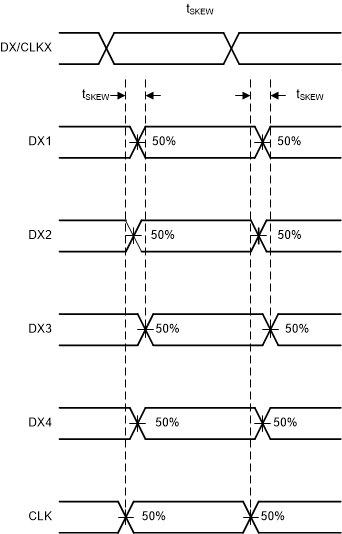
1. All input pulses are supplied by generators having the following characteristics: PRR ≤ 10 MHz, ZO = 50 Ω , tr = 100 ps, tf = 100 ps.
2. CL includes probe and jig capacitance.
3. tSK(INTER) is the max skew between all channels. Diagram exaggerates tSK(INTER) to show measurement technique
Figure 18. tSKEW 
1. All input pulses are supplied by generators having the following characteristics: PRR ≤ 10 MHz, ZO = 50 Ω , tr = 3 ns, tf = 3 ns.
2. CL includes probe and jig capacitance.
Figure 19. tBBM